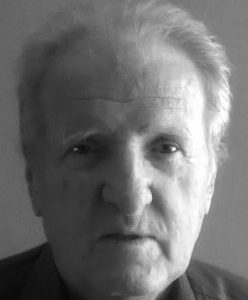Béla Kanyár
His first job was at the Isotope Laboratory of Gamma Works, where he worked on scintillation measurement techniques, among other things; during this time he also completed a reactor technology course. Between 1964 and 1972, as a colleague at the Institute of Medical Physics of the Semmelweis University of Medicine (SOTE), he worked on computer applications in addition to experimental work. Between 1972 and 1982, he worked at the SOTE Computer Center.
Between 1970 and 1982, he participated in the creation and operation of the Computerized National Radiation Planning Network. This represented a major qualitative leap in radiotherapy for domestic patients: it resulted in a significant improvement in the cure rate, survival, and quality of life.
From 1982, he was an employee of the National “Frédéric Joliot-Curie” Institute for Radiobiology and Radiohealth Research (OSSKI), the head of the then Department of Computing and Measurement Technology. He took the initiative to have the Institute acquire a modern computer that could be used for the central data collection and processing tasks of the official environmental control as well as for other research activities of the Institute.
He played a key role in organizing and conducting radiological monitoring of the Hungarian environment following the Chernobyl nuclear power plant accident in 1986; he was awarded a state award for his outstanding work in this field. Even before this, one of his main research areas was the mathematical description and modeling of the migration and spread of radioactive isotopes released into the environment. In the meantime, he was involved in the work of several international modeling research groups.
In the early 1990s, he led the integration of the previously separate radiological networks of various sectors and institutions into a single national environmental radiation protection monitoring system. In 1989, he was appointed Head of the Radiation Health Department of the Hungarian Institute of Radiological and Nuclear Safety, a position he held until 1995, when he became Head of the Department of Radiochemistry at the University of Chemical Industry of Veszprém (VVE).
He wrote his doctoral thesis in 1963 at the KFKI Nuclear Physics II Laboratory, and defended his MTA candidate thesis in 1980. He was the author of nearly 100 peer-reviewed journal articles, more than 100 conference presentations, and several other materials (books, book chapters, notes).
Major awards: Tarján Memorial Medal (NJSZT, 1991); Knight's Cross of the Order of Merit of the Republic of Hungary (2004); Radiation Protection Memorial Medal (Eötvös Loránd Physics Society, ELFT, 2010)
Created: 2018.04.26. 20:58
Last modified: 2024.03.07. 20:25

